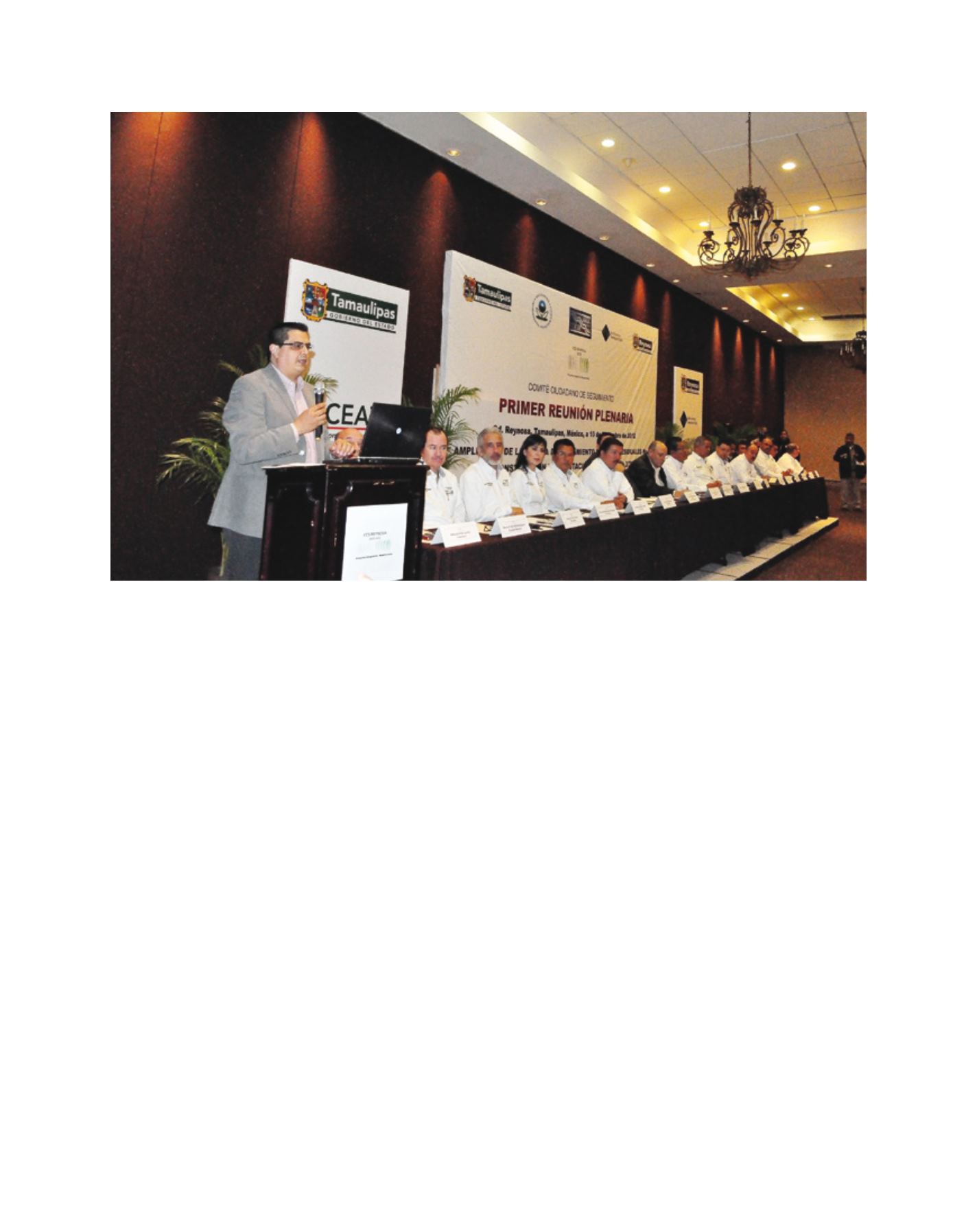

[
] 183
L
egal
F
ramework
at
the
N
ational
/I
nternational
L
evel
tion to this climate crisis. As the drought duration and
intensity increased, communities in Texas put enor-
mous pressure on state and federal governments in the
US. The same thing happened within Mexico between
downstream and upstream states. In accordance with
its functions, IBWC provided a valuable negotiating
framework in which both governments, taking into
consideration the demands of the states and communi-
ties, converged and produced a set of minutes to deal
with the crisis. BECC, through its public participation
mechanisms, led a process involving irrigation users
in both countries in supporting a special programme
for the efficient use of water, created specifically to
deal with drought. In particular, investments in irriga-
tion systems in Mexico improved efficiency in water
use which led to adjustments in water rights. The
recovered water was delivered to tributary rivers, and
eventually reached the international reservoirs where
water is shared by US and Mexico. Reducing the water
rights of irrigation users was not an easy task, but the
actions of both governments in the context of BECC
made it possible. NADBANK, meanwhile, at the direc-
tion of the US and Mexican governments, established
a special programme for financing these investments
for efficient use of water at irrigation systems along the
border. In this manner, in complex rounds of negotia-
tions between the two governments that lasted nearly
two years, the binational institutions were allowed to
participate in the process associated with water conser-
treaty as waters that arrive at the international sections of the Rio
Grande and Colorado River. Under the 1944 Treaty, both countries
make commitments to share water from both river basins. Mexico
agrees to grant to the US an annual volume of 432.72 million cubic
metres on average in a five-year cycle from the Rio Grande basin,
and the US is committed to deliver to Mexico 1.85 billion cubic
metres per year from the Colorado River.
3
The treaty also provides
for dispute settlement mechanisms, particularly empowering the
commission to issue minutes, which in turn form part of the treaty
without modifying its terms, so as to manage water under specific
conditions such as drought or floods. So far there have been 184
minutes, more than one per year on average, which have covered
topics as diverse as construction and operation of dams on interna-
tional river sections, construction and joint operation of sanitation
infrastructure at the border, and the consequences of extreme
hydrometeorological events.
BECC and NADBANK, meanwhile, were created jointly in 1993
by a special agreement signed in the context of the negotiations of
the Free Trade Agreement between the two countries. They are sister
institutions whose mission is to improve the environment and living
conditions of the inhabitants of the Mexico-US border. Although
they are independent institutions, they share objectives and have a
single governing board. At the head of both organizations there is a
national of each country, on a rotating basis.
This institutional arrangement was severely tested during the
drought of 2000-2006, which caused Mexico to accumulate a deficit
of deliveries to the US from the Rio Grande near the volume of a full
five-year cycle. The binational institutions, under the supervision
of both governments, acted together to achieve a cooperative solu-
Social validation is an essential component of the support and international funding model for the border region
Image: BECC


















